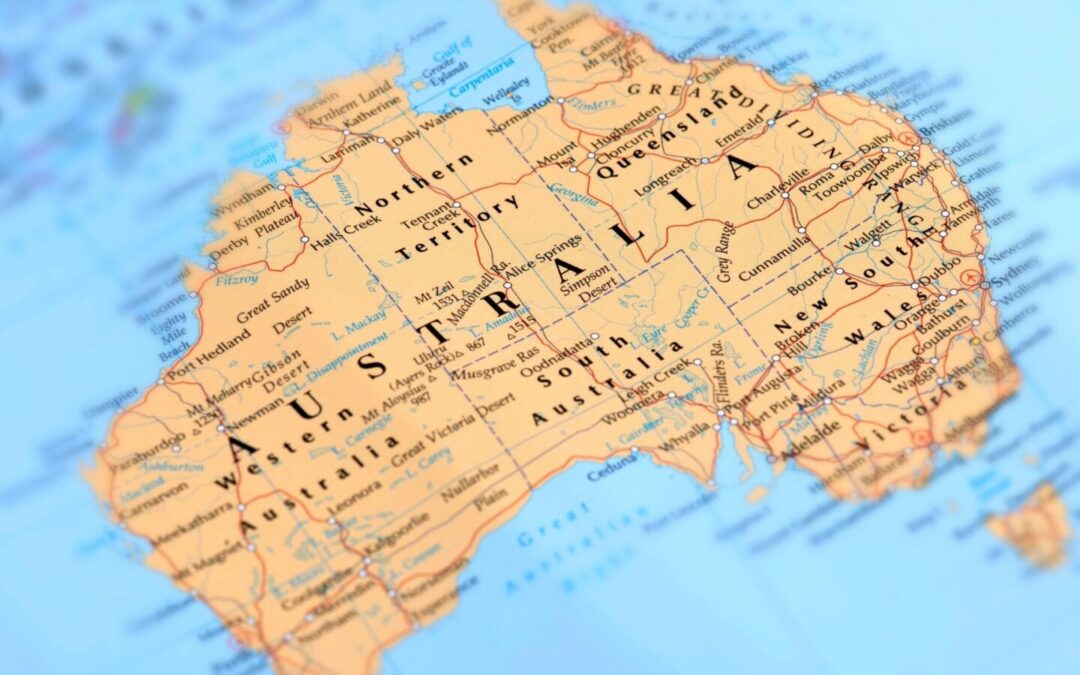The state of Victoria holds the mantle of Australia’s best performing economy, pipping Tasmania after nine consecutive quarters, a quarterly CBA report shows.
A State of the States report released by CommSec, the digital broking arm of CBA, showed Victoria held the top economic ranking across the country’s six states and two territories, closely followed by ACT and Tasmania. Queensland was in fourth place, followed by Western Australia, South Australia, NSW and the Northern Territory.
In all states and territories, housing finance commitments were well above decade averages, CBA said in the report, although home loans were above year-ago levels only in ACT (up 2.1%).
Using current economic information, including data released in the March and June 2022 quarters, the quarterly report provides an economic snapshot of each region.
It compares annual growth rates for eight key indicators: economic growth, retail spending, equipment investment, unemployment, construction work done, population growth, housing finance and dwelling commencements, enabling a comparison of economic momentum.
Read next: CBA provides free internet to approved customers
According to the report, Victoria led the national average on four indicators. It ranked first on retail spending and relative unemployment and second on construction work done and housing finance, and third on dwelling starts.
Based on real (inflation-adjusted) trade, “Victoria again leads the way on retail spending, up 18.5% in the March quarter, from its decade-average levels”, CBA said in the report. Victoria was also strongest in annual growth of real retail trade, up 6.9%, ahead of WA (up 5.1%) and NSW (up 4.8%).
According to the report, unemployment in Victoria stood at a record low of 3.2% in June – 43% below the decade average. Relative population growth was Victoria’s weakness, the report said.
The ACT, which came in second overall, ranked first on equipment investment and housing finance. Tasmania ranked second on equipment investment. Queensland ranked first on relative population growth and second on retail trade.
WA ranked first on relative economic growth, and SA ranked first on dwelling starts and construction work. NSW ranked third on relative unemployment, and NT ranked second on relative economic growth.
Commenting on the report, CommSec chief economist Craig James (pictured above) said while Victoria had moved to the top of the economic leaderboard, there was not much separating the top four economies (Vic, ACT, Tas and Qld).
“Victoria leads the way on two of the eight economic indicators. But showing how even the rankings are, the ACT and South Australia also each lead other economies on two of the eight indicators,” James said.
Using annual growth as a guide for economic momentum, James said annual growth rates in Qld exceeded the national average on all eight indicators.
“In terms of future economic performance, much will depend on how economies are affected by growing COVID-19 case numbers and also how they respond to a period of rising interest rates,” James said.
Read next: CBA offers lower variable rate for green homes
Based on the decade average, the value of home loans in ACT was up 71.2%, followed by Victoria (up 64.9%), Queensland (up 55.6%) and NSW (up 49.6%). The NT remained the weakest for housing finance, with commitments 6.2% higher than its decade average. Housing finance commitments in WA were up 32.6%, behind SA (up 45.8%) and TAS (up 46.1%), the report said.
On an annual basis, home loan commitments were up 2.1% in ACT, followed by Tasmania (down 2.4%), SA (down 3.9%), Qld (down 4.2%), and Vic (down 7.8%).
House finance figures used in the report were based on the seasonally adjusted value of owner-occupier housing finance commitments (May 2022).
Overall, CBA said the report showed all states and territories continued to perform well in challenging times.
Governments across Australia’s state and territory economies were now managing the effects of living with COVID-19, supporting consumers and businesses amid cost-of-living pressures, while also scaling back stimulus measures, CBA said.
Victoria leads other states and territories on two of the eight indicators and was second on another two.
“There are now effectively three groups. Victoria leads from the ACT, Tasmania, and Queensland. Just behind in fifth is Western Australia, ahead of South Australia and NSW. And then there is a gap to Northern Territory in eighth position,” CBA said in the report.
https://www.mpamag.com/ “Which state is Australia’s leading economy” / Priscilla Dickinson
Brought to you by David Philipsen of Parker Finance
www.parkerfinance.com.au

